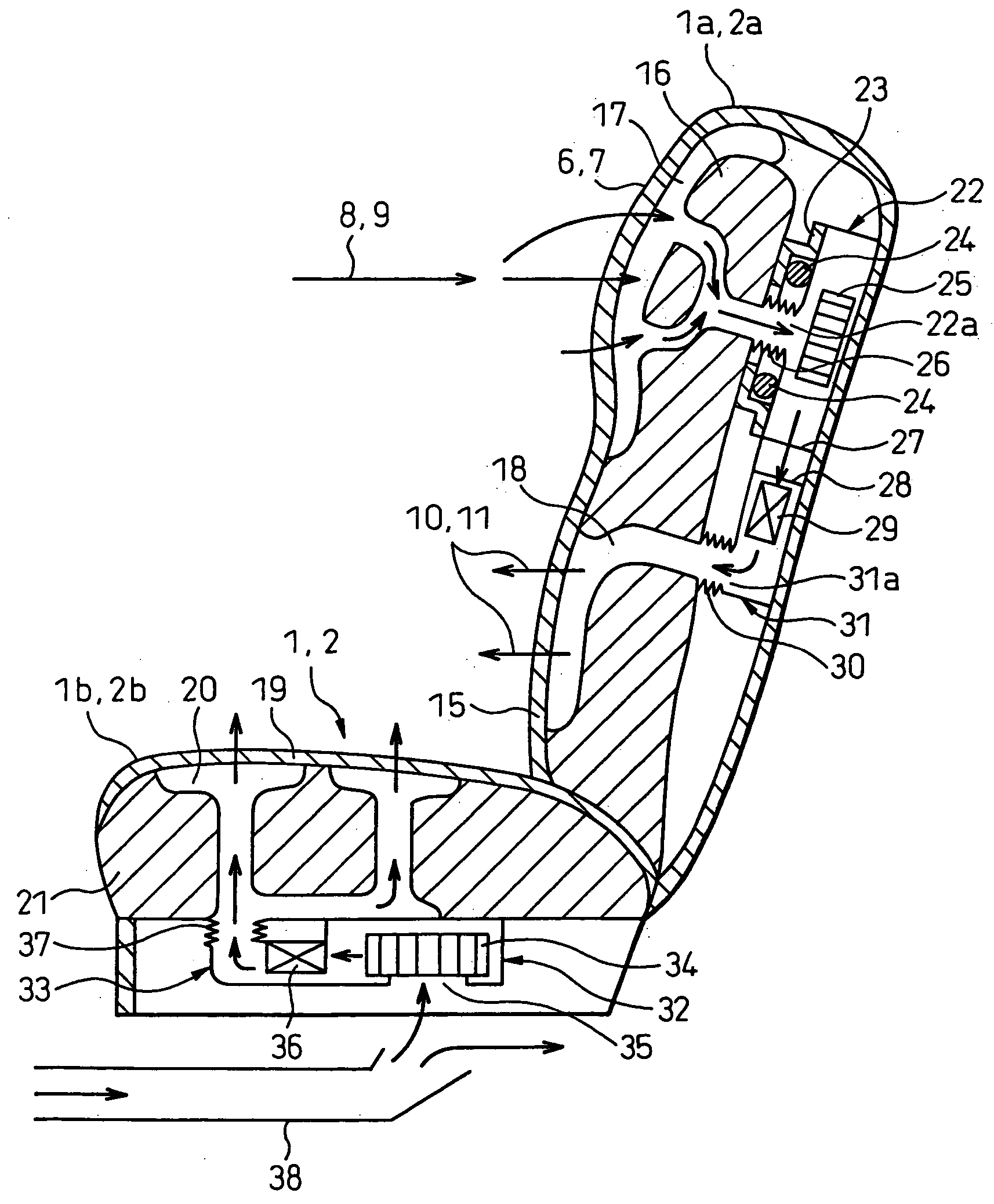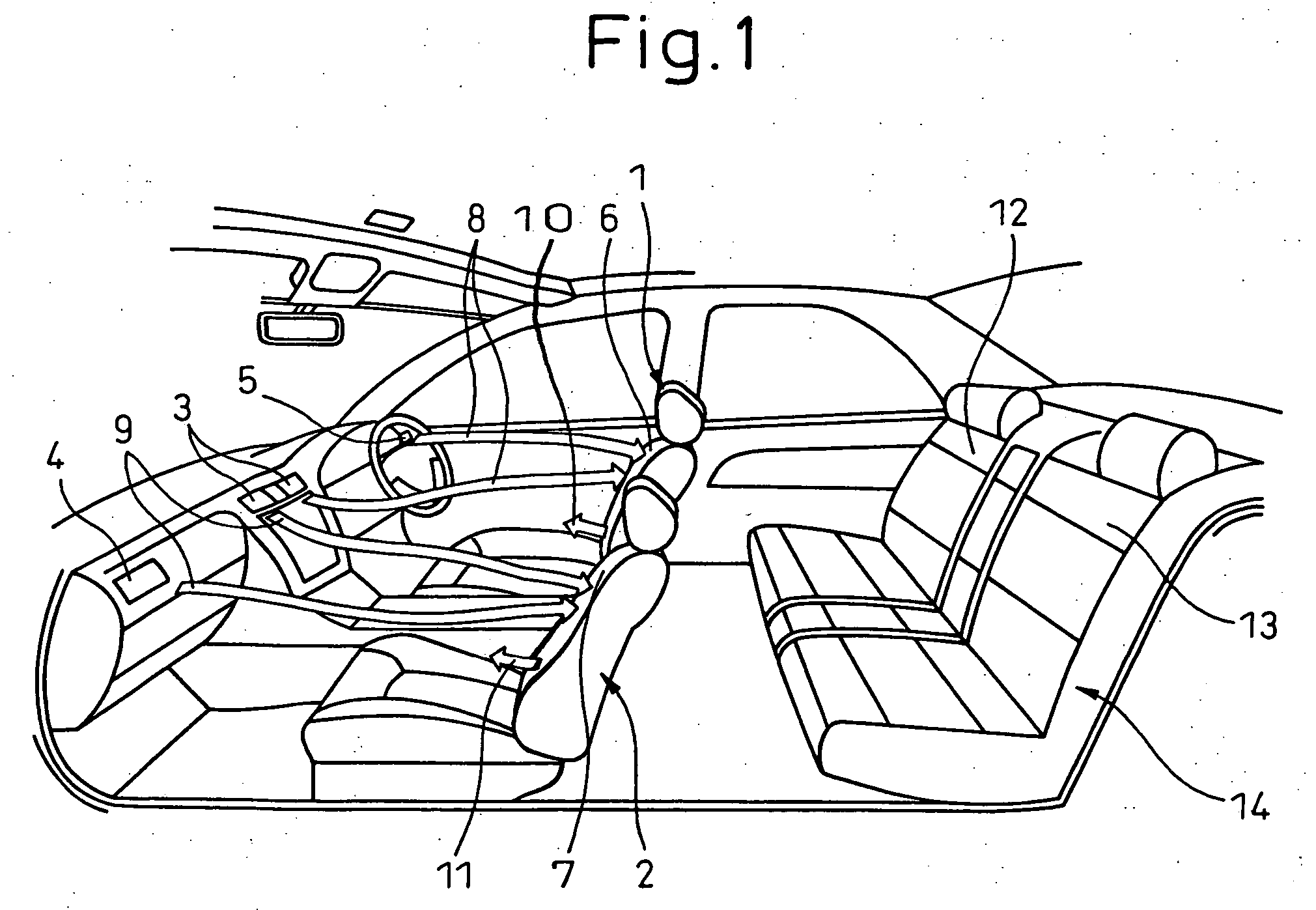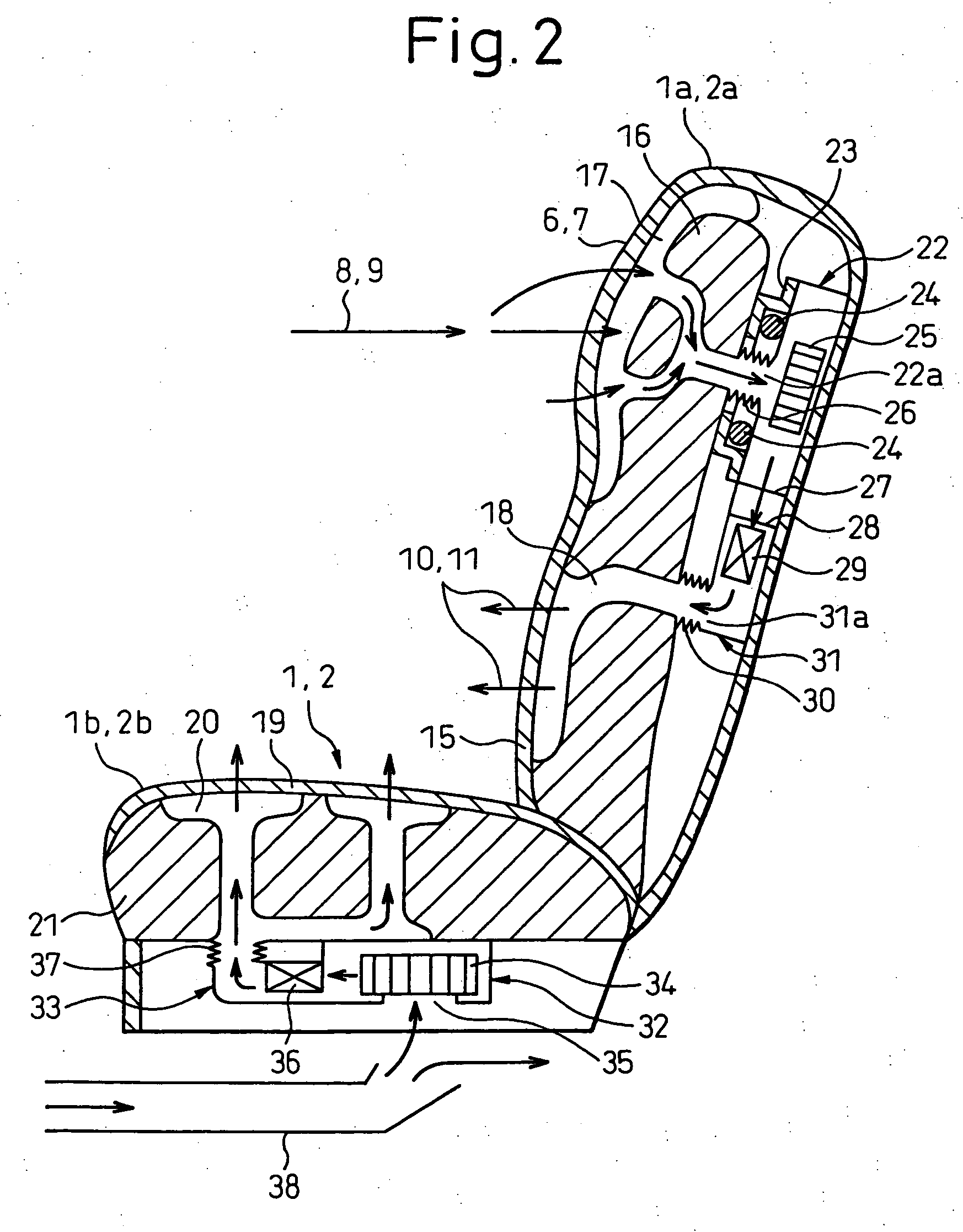Automotive seat air-conditioning system
a seat air conditioner and automobil technology, applied in the field of automobil seat air-conditioning system, can solve the problems of low energy efficiency of the vehicle as a whole, imposing a great burden on the power supply capacity of the vehicle, etc., and achieve the effect of reducing the size of the heat exchanger, facilitating the use of internal space of the vehicle seat, and improving comfort for the occupants
- Summary
- Abstract
- Description
- Claims
- Application Information
AI Technical Summary
Benefits of technology
Problems solved by technology
Method used
Image
Examples
first embodiment
[0025] A first embodiment of the invention is explained below with reference to FIGS. 1 to 6. FIG. 1 is a schematic diagram showing the air flow for sucking in the air-conditioning air using an automotive seat air-conditioning system according to this embodiment. FIG. 6 is a diagram for explaining the operating conditions of the Peltier module of the automotive seat air-conditioning system and the automotive climate control system operatively interlocked with each other.
[0026] As shown in FIG. 1, the automotive seat air-conditioning system according to this embodiment comprises an automotive seat 1 including a seat portion 1b used an occupant and a seatback 1a against which the back of the occupant to leans and a blower 22 constituting a blowing means for sucking in the air-conditioning air 8 flowing in the compartments, wherein the air-conditioning air 8 is sucked in by the blower 22 from an air inlet 6 formed on the surface of the seatback 1a, and the air-conditioning air 8 thus ...
PUM
 Login to View More
Login to View More Abstract
Description
Claims
Application Information
 Login to View More
Login to View More - R&D
- Intellectual Property
- Life Sciences
- Materials
- Tech Scout
- Unparalleled Data Quality
- Higher Quality Content
- 60% Fewer Hallucinations
Browse by: Latest US Patents, China's latest patents, Technical Efficacy Thesaurus, Application Domain, Technology Topic, Popular Technical Reports.
© 2025 PatSnap. All rights reserved.Legal|Privacy policy|Modern Slavery Act Transparency Statement|Sitemap|About US| Contact US: help@patsnap.com



